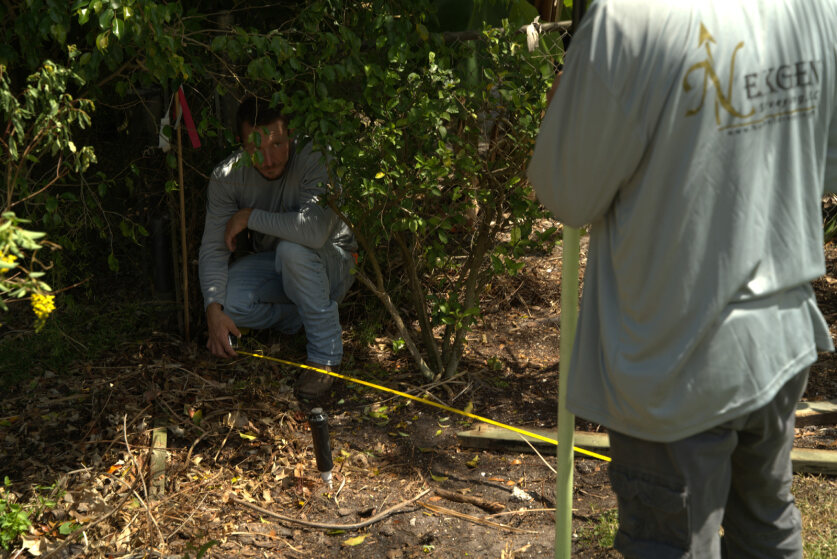Topographical surveying is the technique of mapping and measuring the physical features of a place of land or frame of water, including natural capabilities like hills and rivers in addition to man-made functions like roads and homes. The motive is to correctly constitute the topography, or shape and elevation, of the land.

Key Factors of Topographical Surveys
- It includes taking specific measurements of the elevation, slope, contour lines, and dimensions of diverse landforms and functions. This is finished via surveying gadgets like theodolites, overall stations, GPS gadgets, and leveling tools.
- The facts accumulated are used to supply specified topographic maps that display contour lines representing elevation in addition to planimetric functions like roads, homes, plants, and so on. These maps serve many engineering, creation, planning, and environmental functions.
- Accurately surveying topography requires techniques like trigonometric leveling, differential leveling, and using GIS to combine and examine the collected spatial records approximately capabilities and elevations.
- Surveyors need to bear in mind elements like modifications in temperature and strain, Earth’s curvature, and magnetic declination which could impact measurements. Proper strategies help account for those.
- The kinds of maps produced encompass topographic profiles showing elevations alongside set transects, virtual elevation fashions (DEMs), land contour maps, plot boundary plans, and more tailored to specific needs.
How is a Topographical Survey Performed?
Topographical surveys are done with the aid of certified topographic surveyors using a specialized machine to map out geographic capabilities. While techniques range, here is a standard evaluation:
The first step is planning for the vicinity to be surveyed with an aerial map and geographic statistics gear. The surveyor will strategically perceive survey management factors as reference measurements.
Next, survey corporations take precise measurements within the area with the aid of the usage of gear like the general station, GPS receivers, and drones as they record information points, contours, and elevations.
Back inside the workplace, a topography software program helps with the translation of location statistics into targeted three-D contour maps. Geographic Information System (GIS) gear allows integrating, studying, and pass-referencing extra map layers.
Key Methods Used in Topographic Mapping
There are several center strategies topographic surveyors use to capture the contours and terrain:
Field Surveys – Using surveying units like ordinary stations and GPS devices, survey crews take unique ground-degree spot measurements of elevation, distances, and angles among factors throughout the landscape.
Aerial Photogrammetry – Special overlapping aerial images are taken after which they are analyzed to extract terrain information and generate elevation fashions.
LiDAR – Airborne laser scanning system sends fast laser pulses and measures reflection instances to map three-D factor clouds of the earth’s surface.
Satellite Imagery – High-selection satellite tv for pc TV for PC snapshots from assets like satellites and drones help visualize the shape of terrain.
Digitization – Existing topographic maps are transformed into a digital format with CAD and GIS software packages for less complicated assessment.
Types of Topographical Maps Are Produced?
There are some common styles of topographic land surveys:
Urban Surveys – Provide noticeably correct maps of cityscapes wished for infrastructure projects like subdivisions and transportation.
Cadastral Surveys – Focus on asset obstacles and land ownership parcels, frequently filed with government and land registrars.
Construction/Engineering Surveys – Specialized surveys to devise construction websites, grading plans, utilities, and more.
Mining Surveys – Map out underground mines and vital elevation adjustments for ongoing mining operations.
No, depending on the motive, exceptional topographical surveys offer essential visibility into the physical landscapes on which we construct our world.
Key Instruments Used in Topographical Surveying
Modern topographic mapping is primarily based on superior surveying era to extract specific geographic statistics:
Total Stations – Electronic devices placed on a tripod that could correctly measure angles and distances to several elements with the usage of an infrared beam.
GPS/GNSS Receivers – Global satellite TV for PC navigation gadgets document specific geographic coordinates that may be mapped.
Three-D Laser Scanners: LIDAR laser scanning captures specific contour models and surface snapshots.
Drones – Aerial drones provide beneficial excessive-stage panorama views and visualize tough-to-get proper entry to areas.
Digital Levels – Modern virtual tires use laser leveling beams to enhance elevation and contour accuracy.
Conclusion
The next time you take a look at a topographic map, you’ll recognize the technology and effort devoted to taking pictures of our complex landscapes. So, exploring the contour traces and understanding widespread topographical surveying made it possible!
